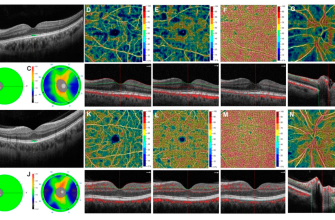If you’re experiencing vision problems, especially sudden vision loss, stop taking Cialis immediately and seek medical attention. This is crucial because Cialis, like other PDE5 inhibitors, carries a potential risk of Non-arteritic Anterior Ischemic Optic Neuropathy (NAION), a type of vision loss.
NAION affects the optic nerve, potentially leading to permanent vision impairment. While rare, this risk is heightened in individuals with pre-existing risk factors, including high blood pressure, diabetes, high cholesterol, and age over 50. Regular check-ups with your doctor are paramount, particularly if you have any of these conditions.
Before starting any medication, particularly Cialis, a thorough medical history review is necessary. Open communication with your doctor about your medical conditions and medications is vital for minimizing potential complications. They can assess your personal risk profile and advise you on the safest course of action. Don’t hesitate to discuss your concerns; your eye health is a priority.
Remember, this information serves as general guidance. Individual responses to medications vary. Always consult your physician or ophthalmologist for personalized advice and treatment. They can provide a tailored assessment of your risk and help you make informed decisions regarding your health.
- Naion and Cialis: Understanding the Risk
- Understanding Non-Arteritic Anterior Ischemic Optic Neuropathy (NAION)
- Risk Factors and Prevention
- Diagnosis and Treatment
- Living with NAION
- Medication and NAION
- Cialis (Tadalafil) and its Mechanism of Action
- The Link Between Cialis Use and Increased NAION Risk
- Understanding the Risk Factors
- Managing the Risk
- Identifying Risk Factors for NAION Beyond Cialis
- Managing NAION Risk: Lifestyle and Medical Considerations
Naion and Cialis: Understanding the Risk
Cialis, like other phosphodiesterase-5 (PDE5) inhibitors, carries a small but real risk of causing non-arteritic anterior ischemic optic neuropathy (NAION). NAION is a condition causing sudden vision loss. This risk is slightly higher for men already predisposed to NAION due to existing risk factors.
Studies show this risk is generally low, but it’s important to be aware. The precise increase in risk varies across studies but is a factor to consider.
| Risk Factor | Description |
|---|---|
| Age | Older men (over 50) face a higher chance of NAION. |
| Pre-existing NAION in one eye | A history of NAION in one eye significantly increases the risk of it occurring in the other. |
| High blood pressure | Uncontrolled hypertension is a known risk factor for NAION. |
| Diabetes | Diabetes mellitus is linked to increased NAION incidence. |
| Smoking | Smoking is associated with cardiovascular disease, a contributing factor for NAION. |
| High Cholesterol | Elevated cholesterol levels increase the likelihood of vascular issues, increasing NAION risk. |
Before starting Cialis, discuss your medical history with your doctor, particularly any cardiovascular problems or risk factors for NAION. Open communication is key. They can help determine if Cialis is the right choice for you, considering your individual circumstances and potential risks.
Remember, this information should not substitute advice from a healthcare professional. Always consult your doctor for personalized guidance.
Understanding Non-Arteritic Anterior Ischemic Optic Neuropathy (NAION)
NAION is a condition causing sudden vision loss. It happens when the optic nerve, responsible for transmitting visual information from your eye to your brain, doesn’t receive enough blood. This lack of blood flow leads to damage and, consequently, vision impairment. The condition usually affects one eye, and symptoms often start suddenly. You might experience blurry vision, a dark spot in your central vision, or even complete vision loss in the affected eye.
Risk Factors and Prevention
Several factors increase your risk of developing NAION. These include high blood pressure, diabetes, high cholesterol, sleep apnea, and glaucoma. Maintaining healthy blood pressure and cholesterol levels, managing diabetes effectively, and treating sleep apnea are crucial preventative measures. Regular eye exams are also vital for early detection, even if you don’t have any symptoms.
Diagnosis and Treatment
Diagnosing NAION involves a thorough eye exam. Your doctor will assess your visual acuity and examine the optic nerve for signs of damage. Imaging tests, such as optical coherence tomography (OCT), might be used to confirm the diagnosis. Treatment focuses on managing underlying health conditions and preventing further vision loss. There’s no cure for NAION, but prompt treatment of risk factors can help reduce the chances of vision loss in the other eye.
Living with NAION
Adjusting to life with NAION requires patience and support. Vision rehabilitation can help improve your daily functioning. Techniques such as low vision aids and adaptive strategies can significantly enhance your quality of life. Connecting with support groups and professionals specializing in vision rehabilitation can offer valuable guidance and emotional support during your recovery.
Medication and NAION
Some medications, including Cialis (tadalafil), are associated with a slightly increased risk of NAION. This risk is relatively small, and the decision to use these medications should be made in consultation with your doctor, weighing the potential benefits against the potential risks. Open communication with your healthcare provider is key to making informed decisions about your health.
Cialis (Tadalafil) and its Mechanism of Action
Tadalafil, the active ingredient in Cialis, works by inhibiting a specific enzyme called phosphodiesterase-5 (PDE5).
This inhibition leads to increased levels of cyclic guanosine monophosphate (cGMP) in the smooth muscle cells of the corpus cavernosum.
- Increased cGMP relaxes these smooth muscles.
- Relaxation allows increased blood flow into the penis.
- This increased blood flow facilitates penile erection in response to sexual stimulation.
The duration of Tadalafil’s effect is longer than that of other PDE5 inhibitors, due to its longer half-life. This means it remains active in the body for a longer period, potentially providing a longer window of opportunity for sexual activity.
Importantly, Tadalafil’s effect is only observed in the presence of sexual stimulation. It does not spontaneously cause erections.
- Sexual stimulation triggers the release of nitric oxide (NO).
- NO activates guanylate cyclase, increasing cGMP levels.
- Tadalafil’s PDE5 inhibition prevents the breakdown of cGMP, prolonging its effects.
Remember to consult a healthcare professional before starting any medication, including Tadalafil, especially if you have pre-existing health conditions.
The Link Between Cialis Use and Increased NAION Risk
Studies suggest a correlation between Cialis use and an increased risk of Non-arteritic anterior ischemic optic neuropathy (NAION). This risk appears elevated, particularly in individuals already possessing risk factors for NAION, such as high blood pressure, diabetes, or a history of cardiovascular disease. The exact mechanism isn’t fully understood, but it’s hypothesized that Cialis’s vasodilating properties might play a role in reducing blood flow to the optic nerve, potentially triggering NAION.
Understanding the Risk Factors
Men with pre-existing NAION risk factors should discuss the potential increased risk with their doctor before starting Cialis. Open communication with your healthcare provider is key. They can help assess your individual risk profile and determine if the benefits of Cialis outweigh the potential risks in your specific case. Regular eye exams are also recommended, particularly for those already diagnosed with cardiovascular issues or diabetes.
Managing the Risk
While the link between Cialis and NAION isn’t definitive, awareness of the potential association is crucial. Maintaining a healthy lifestyle, managing underlying health conditions effectively, and undergoing regular eye examinations help minimize potential complications. If you experience sudden vision loss, seek immediate medical attention. Prompt diagnosis and treatment are vital for optimal outcomes.
Identifying Risk Factors for NAION Beyond Cialis
Consult your ophthalmologist immediately if you experience sudden vision loss. Early diagnosis is key.
Beyond Cialis, high blood pressure significantly increases your NAION risk. Maintain healthy blood pressure through diet, exercise, and medication if necessary. Regular check-ups are crucial.
Diabetes is another major risk factor. Strict blood sugar control through diet, exercise, and medication helps mitigate this risk. Frequent blood glucose monitoring is recommended.
Sleep apnea, a condition where breathing repeatedly stops and starts during sleep, is strongly linked to NAION. Addressing sleep apnea through lifestyle changes or CPAP therapy is vital.
Cardiovascular disease, including heart attacks and strokes, increases NAION risk. Manage cardiovascular health through diet, exercise, and medication as advised by your doctor.
High cholesterol levels contribute to NAION. Maintain healthy cholesterol levels through diet, exercise, and medication if needed. Regular lipid panels are beneficial.
Smoking significantly raises your risk. Quitting smoking is the most impactful step you can take to reduce this risk. Seek support if needed.
Age is a factor; older individuals are at higher risk. Regular eye exams become increasingly important with age.
Certain medical conditions, like glaucoma and increased intraocular pressure, elevate NAION risk. Regular eye examinations to monitor these conditions are critical.
Family history of NAION should prompt increased vigilance and more frequent eye checkups.
Managing NAION Risk: Lifestyle and Medical Considerations
Maintain a healthy weight. Obesity increases your risk of cardiovascular disease, a known NAION risk factor. Aim for a Body Mass Index (BMI) within the healthy range.
Control your blood pressure. High blood pressure significantly elevates NAION risk. Regular monitoring and medication, if needed, are crucial for management.
Manage your blood sugar levels. Diabetes is strongly linked to NAION. Close monitoring and adherence to your diabetes treatment plan are vital.
Quit smoking. Smoking damages blood vessels, increasing the likelihood of NAION. Seek support for quitting; many resources are available.
Reduce your cholesterol. High cholesterol contributes to cardiovascular issues, raising NAION risk. Discuss cholesterol-lowering strategies with your doctor.
Control sleep apnea. Untreated sleep apnea can reduce oxygen levels in the blood, increasing NAION risk. Consult a sleep specialist if you suspect you have sleep apnea.
Limit alcohol consumption. Excessive alcohol use increases the risk of several conditions linked to NAION. Moderate or abstain from alcohol consumption.
Regularly see your ophthalmologist and primary care physician. Early detection and proactive management of underlying conditions are key to minimizing NAION risk. Schedule routine checkups.
Discuss medication interactions with your doctor. Certain medications can increase NAION risk. Open communication with your doctor about all your medications is essential.






